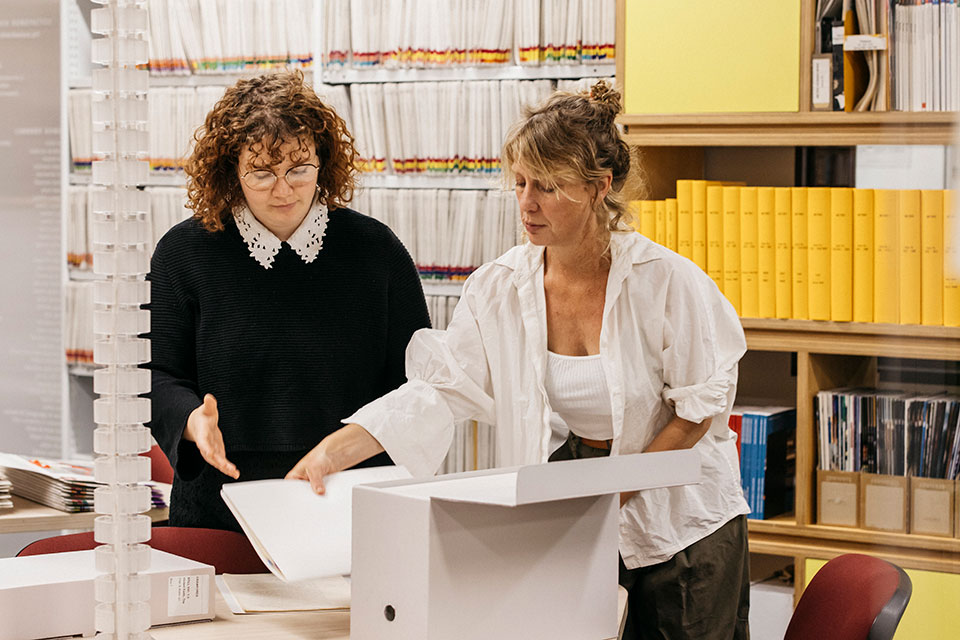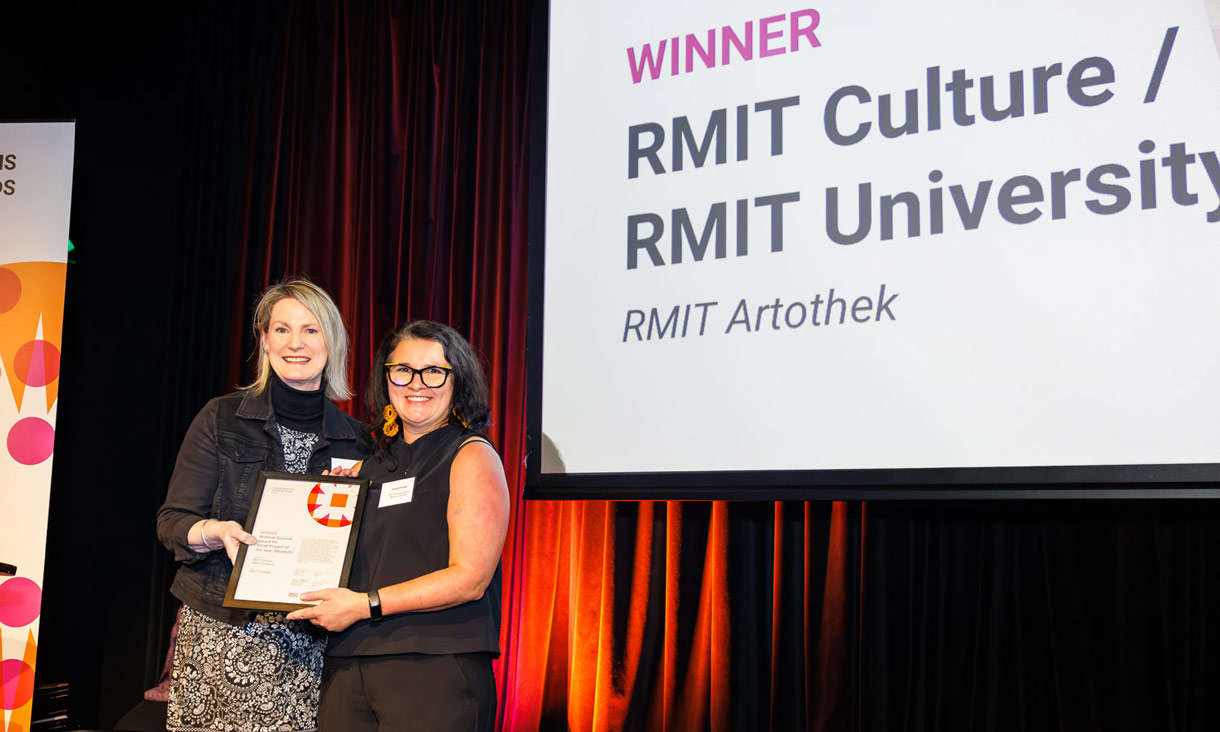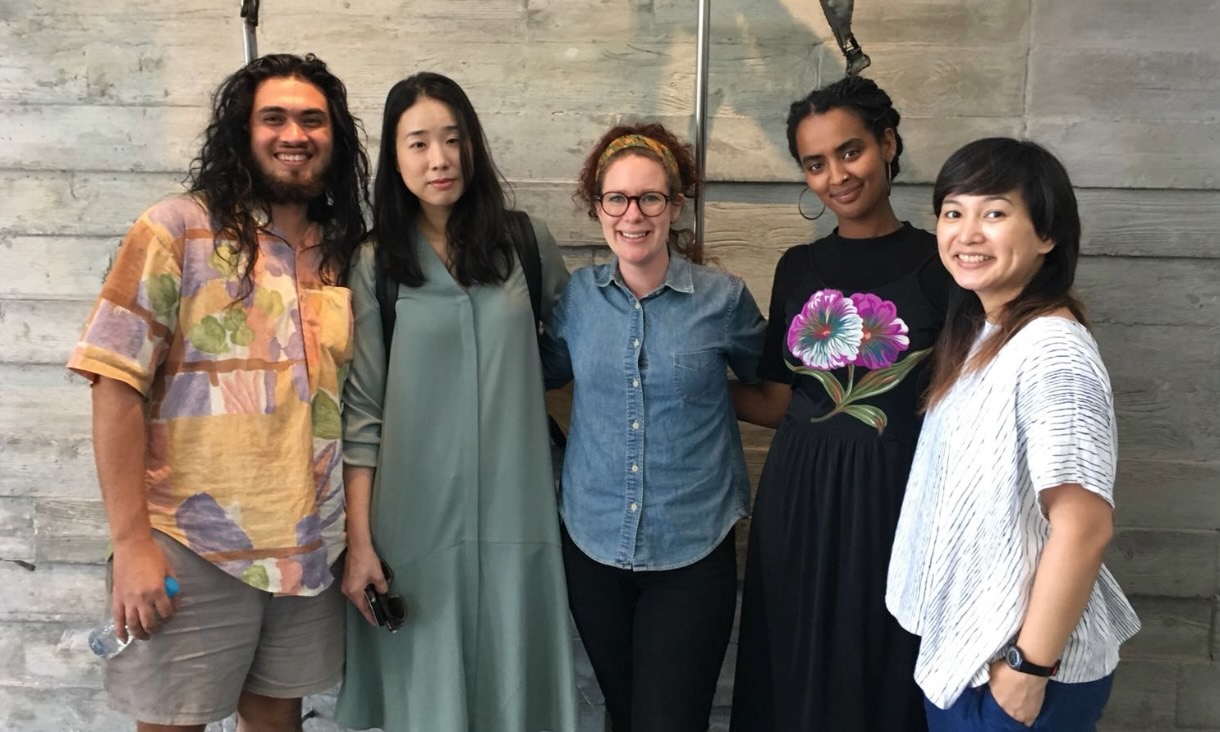Daring. Wild. Outrageous. These are a few words which describe Melbourne-based fashion designer Jenny Bannister and her works. Bannister’s unique and often-punk-inspired designs have withstood the test of time and secured her a distinguished and iconic place in Australian fashion.
Now, she joins RMIT Gallery as the inaugural curator of an exhibition series which looks to explore the RMIT Art Collections and Design Archives. Jenny explores the depths of these archives and in doing so, she illustrates her own journey through history. The exhibition is a collection of Bannister's creative works and a glimpse into an era that changed the future of Australia's fashion culture.
Bannister describes the outfits she's brought in for the show as "a mixed bag of originals from the 70s early 80s and a few new upcycled pieces." On the walls of the exhibition, posters and art have been carefully chosen by Jenny herself from the RMIT Design Archives. Jenny explains that "the paintings and art shows and music gigs were also very important to our lifestyle." An iconic work by Melbourne-based artist Howard Arkley in his signature suburbia-esque airbrush style is one of the few paintings selected for the exhibition. In a way it sets the cultural scene for the exhibition and helps us, the gallery visitor, step back into this era.
RMIT Gallery's Senior Curator Andrew Tetzlaff said that the team reached out to Jenny "both because of her connection to the University and because we were interested in her unique creative voice." Tetzlaff describes the exhibition as "an energetic mixing pot of works which, when brought together, reveals some interesting and deep-seated interconnections."
"All of the garments Jenny loaned us for this exhibition didn’t come out of an archive, they came out of a closet. These are garments to be worn—and they get worn. When they are not on display here, they are walking streets or at gigs and celebrations," Andrew says.
"The posters in gallery two provide a great backdrop for Jenny’s exhibition," Andrew continues. "They show—in both their design and the events they promote—the porousness and interrelationship that existed between Melbourne’s cultural communities in the late 1970s and early 1980s.”
It was during this era—the late 70s and early 80s—when Jenny launched her own label, Jenny Bannister Fashion. "Melbourne was the centre of it all … it was all a big melting pot of creatives. Fabulous," Jenny says. Artists mixed with architects, fashion designers and musicians; there was a marvellous community of creatives who were innovating and, at the same time, inspiring one another.
Stories of rebellion, punk and unorthodox lifestyles come to mind during this period. "My mother would've been horrified if she'd known what was going on," Jenny says, “[mainly] because I rebelled, I rebelled all the time. I didn’t want to be a nice girl—I didn’t want to be a twinset and pearls girl.” Jenny preferred studs and leather; red leather was her personal favourite. Her designs were boldly constructed from plastics, metal, leathers, fur and upcycled found objects, and the unique way she brought these disparate materials together marked the industry.
As for the exhibition itself, it is a refreshingly physical experience which follows many months of virtual gallery tours and online art experiences. "While most all exhibitions and works can be experienced through a screen, some translate better than others," Andrew says. "This experience of being with the work is much different to the screen experience—the works function differently in these environments."
The pandemic has, of course, made publicly opening exhibitions very challenging. "With the more stabilised situation in Australia and a set of COVIDSafe University systems though, we are excited to recommence our program and welcome back visitors to our galleries," he enthuses.
RMIT Gallery has opened its doors once again with the newest exhibition Jenny Bannister Raids the Archives, which runs until May 8.
Don't miss out on Jenny’s iconic works and this special glimpse into Melbourne’s cultural history.
By intern Diane Armstrong, Bachelor of Communication (Professional Communication)
Story tile: Decorated Neoprene Surf Jacket (2015) designed by Jenny Bannister includes many unique details such as safety pins, sardine tins and can lids. Jenny Bannister Raids the Archives 2021 RMIT Gallery. Photo by Mark Ashkanasy
Banner image: Installation view, Jenny Bannister Raids the Archives, 2021, RMIT Gallery - Photo: Mark Ashkanasy.




